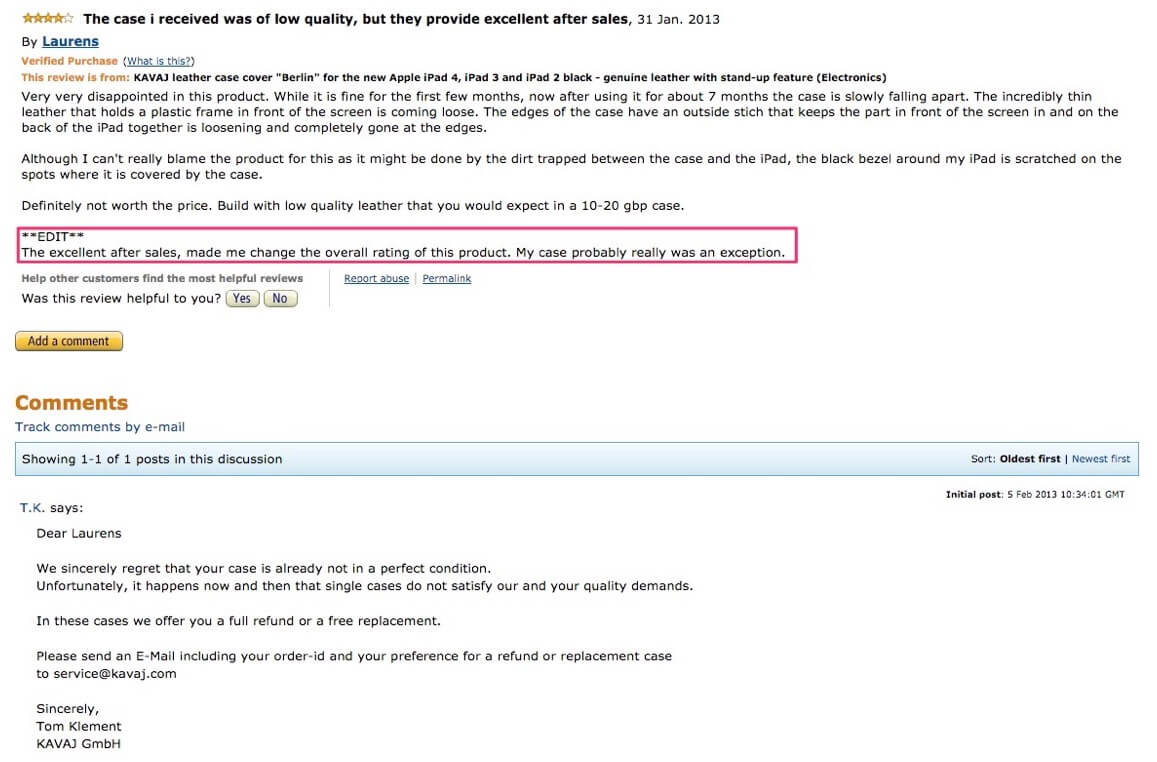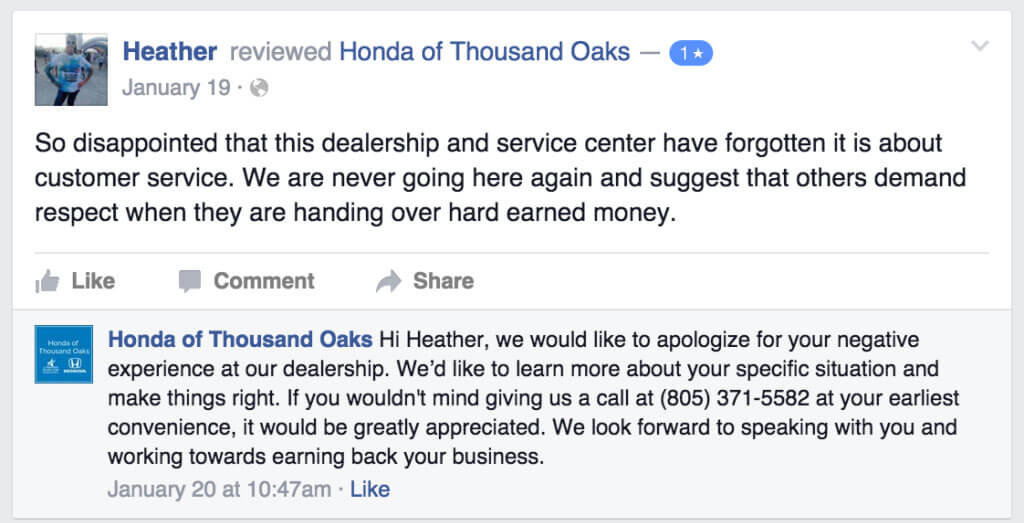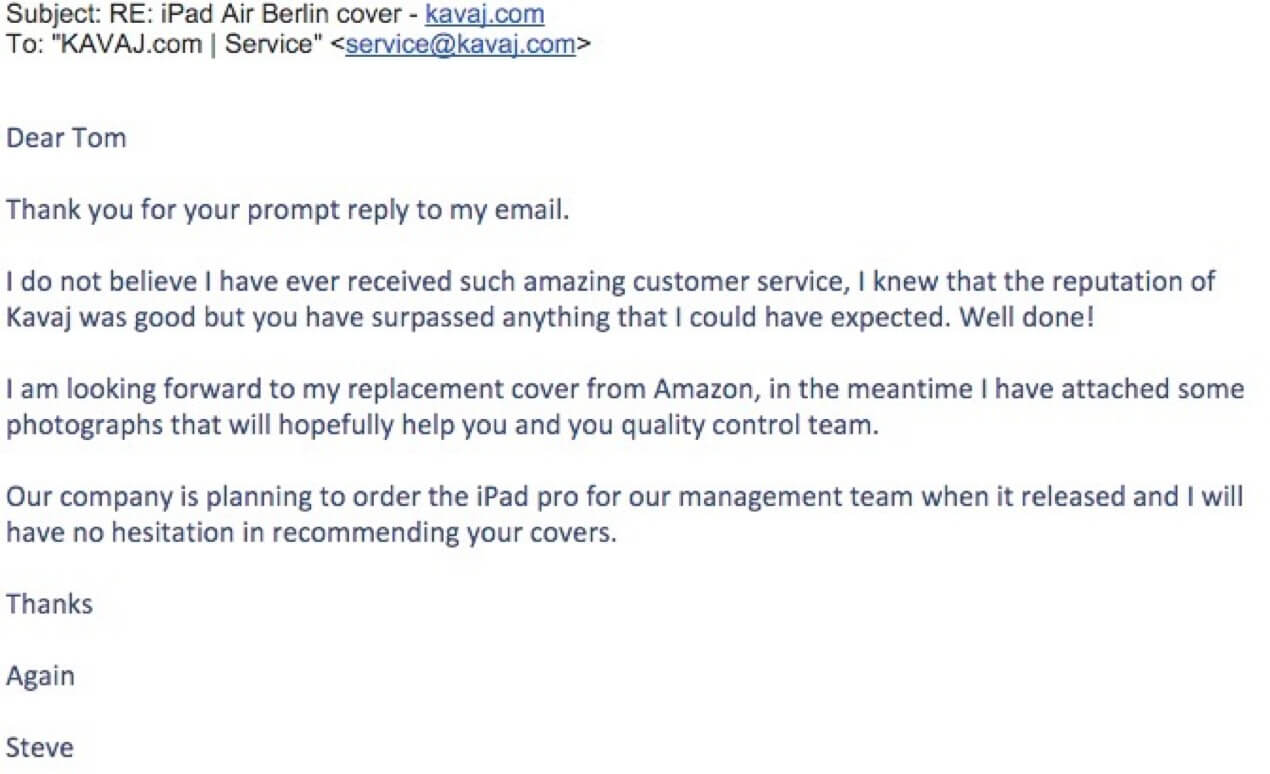How To Respond to Negative Reviews


For today’s ecommerce retailers, negative reviews just come with the territory. In fact, with so many built-in, on-site rating and review features, many even invite them right in.
And that’s a good thing.
Bad reviews actually give you power as a retailer. They give you an opportunity to use your brand voice, to right your wrongs and to deliver stellar customer service — and to do it publicly, where potential customers can see it.
Here’s a closer look at why negative reviews matter and how to respond to them.
It’s easy to focus on generating positive reviews, but negative reviews deserve as much (if not more) attention. In fact, for products with low review counts, a single negative review can be especially damaging since it will have a great impact.
Clear, honest and upfront content increases the customer’s understanding of the product and its features, with the goal of reducing confusion. For example, if you don’t mention on your detail page whether a skillet can only be used safely up to 400 degrees, you’re going to get negative reviews from people who melt that product because they didn’t realize its limitations.
Whether you’re responding to negative reviews on Yelp, Google, Facebook or Amazon, you’ve already taken the first step: actually responding.
In today’s highly digital, super transparent society, simply ignoring a bad review is no longer an option. In fact, it can actually make matters worse. But just responding in itself isn’t enough. What you say, how you say it and even when you post that response all matter, too.
Do you have a bad review to respond to? Then heed these rules:
The customer thought it was important enough to post a public review, so treat it as urgent. Respond quickly, show that you’re in tune with customer feedback and that you’re an active participant in your business.
Always offer to make your wrongs right. If someone was unhappy with their meal, invite them in for a free dinner on the house, and put your best chef on it. If their shirt arrived with a tear in the sleeve, send a replacement one — and do it ASAP.
Many times, customers won’t take you up on your offer of a freebie, but it’s vital that you offer regardless — if only to show potential leads that you’re willing to go the extra mile.

Customers want to know it’s an actual human responding to them — not a bot or IFTTT mechanism. Try to be as authentic as possible in your replies, and keep the marketing speak and jargon out of the equation.
Keep it real, conversational and honest, and your customer will appreciate it.

It’s important to take the high road when responding to negative reviews. Even if a customer posts a low-blow, try to keep your response polite, civil and aimed at the problem at hand: the customer’s dissatisfaction.
Empathize with the customer’s complaints. Saying “I’m sorry” or “I understand” can go a long way in making a customer feel like their opinion is valid (and valued).
To take it one step further, you can even make recommendations for a better experience next time around:
“I’m sorry you found your XX purchase too expensive. I’d love to get you on our email list to let you know about our upcoming sales and specials!”
If a potential customer were to read that bad review, what concerns would they have? That their order will arrive late? That their food will be bad? That the products won’t work or the clothes won’t fit?
Find a way to address these issues in your response and set potential customers’ worries at ease.
Once you’ve responded publicly online, make an effort to contact the customer personally to prove it’s not all for show. Send them a message on Yelp, email their Google address or call them up to see how you can make it right.
This sort of extra-mile effort may even encourage them to come back and change their review or post a new one.

You can end send out emails to past customers with a link right to your page. The more good reviews you have, the less important that negative one will look.
“You definitely should not incentivize the review at all, but the act of following up with a customer via Amazon’s email platform is perfectly fine.”
– Jeff Coleman, VP, Marketplace Channels at Tinuiti
“You do need to walk a fine line because you don’t want to be spammy. A lot of the email follow up platforms will have automation in place where you can send an email thanking your customer for the order, once they received the item to make sure they got it, two weeks after they received it to make sure they liked it – identify these checkpoints. Don’t email someone every day and say ‘Leave a review’. Everything should coincide with a checkpoint.”
So how do you actually put these tips into action?
How can you relate them to your business, customers and real-life reviews?
When it comes to Amazon sellers – they are constantly seeking new opportunities to improve their reviews (and star rating) on the Marketplace, and there’s power in high-quality creative content.
More than ever, Amazon is working to empower brands with the creative tools and features they need to establish brand equity and promote shopper loyalty. Amazon offers a multitude of branding features, including Stores, A+ Content, Premium A+ Content, Enhanced Brand Content, and video.
According to Tinuiti’s 2019 Amazon Consumer Shopper Survey, although 41.1 percent of shoppers say “price” is still the top factor in their purchase decisions, customers are increasingly considering quality content such as product descriptions and photos when making a purchase. In the past year, we saw the value of product descriptions and photos increase from 6.3 percent in 2018 to 7.7 percent in 2019.
Not only do these creative features help to improve the aesthetics of brands on Amazon’s Marketplace, but they also provide new opportunities to drive traffic to a brand’s entire product catalog, increase detail page conversion rates, and support review generation.
